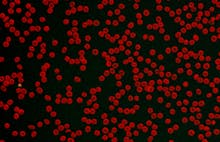Lymphocytes
Definition, Absolute Count And Causes
Lymphocytes Definition
Like other types of white blood cells, lymphocytes play a key role in helping the body’s immune system fight cancers or foreign viruses, bacteria and parasites.
Lymphocytes are a type of white blood cell that develop in the bone marrow, before maturing and exiting into the bloodstream. Mature lymphocytes are found in the blood and lymph tissue.
After developing in the bone marrow, some lymphocyte cells travel to the thymus, where they become T cells. Other lymphocytes stay in the bone marrow, where they become B cells. Some of them also develop into NK cells.
Roles and functions of lymphocytes
How the lymphocyte behaves and what it does depends on which type of lymphocyte it is. T, B and NK cells each have different roles in the immune system.
The main job of B cells is to help to make antibodies. These are proteins which the immune system produces to fight off invading viruses and bacteria.
T cells help to kill cancer cells and control the body’s immune response to foreign substances. They are also responsible for killing the body’s own cells that have been taken over by viruses or have become cancerous.
There is a final, third type of lymphocyte, known as a natural killer (NK) cell. NK cells respond quickly to several foreign substances and are specialized in killing cancer cells and virus-infected cells.
What is absolute lymphocytes count (ALC)?
An absolute blood cell count is a part of the results of a blood test. It is when the number of cells is expressed as an absolute number, rather than as a percentage.
The absolute lymphocytes count can be calculated by multiplying the total number of white blood cells against the percentage of white blood cells which are lymphocytes. If the white blood cell count is 8000, and 20% of those white blood cells are lymphocytes, that means the absolute lymphocytes count would be 1600 (8000 x 0.2). This is a normal lymphocytes count.
What is the normal range for lymphocytes?
The normal range for lymphocytes is between 800 and 5000 (0.8-5.0) lymphocytes per mL of blood. A normal lymphocytes percentage is 18-45% of total white blood cells. Lymphocytes count can be quite varied, and depends on age, gender, race, and even altitude.
What causes high lymphocytes?
A high lymphocyte count, also called lymphocytosis, is usually due to an infection. This is the opposite of lymphocytopenia, which is a low lymphocytes count. A low lymphocyte count can indicate certain viral diseases, including COVID-19.
To get a full picture of white blood cell health, you can have a lymphocytes blood test as part of a complete blood count.
During an infection or illness, the body often produces extra lymphocytes to help fight it. After an infection, there will be leftover lymphocytes due to the body’s overproduction, however these are usually harmless and asymptomatic.
Alternatively, a high lymphocyte count can represent something more serious. It can indicate a problem with the bone marrow or the way the body produces white blood cells. This can be a sign of a condition such as cancer of the blood or lymphatic system. It could also indicate an autoimmune disease.
What are the symptoms of high lymphocytes count?
There are usually no symptoms of high lymphocytes. If they are due to the end of an illness or infection, symptoms would include typical indications an infection is coming to an end.
However, if the high lymphocytes count is due to a blood disorder or cancer, there may be symptoms. These might include swollen lymph nodes around the armpits, stomach, neck or groin. Night sweats, fever, stomach pain, loss of appetite, and shortness of breath are also symptoms of lymphocytic leukemia.
Discover the automated CBC Machine - Sight OLO
Disclaimer: The content of this knowledge post intends to provide general information related to topics that are relevant to blood diagnostics and may not be used in relation to the operation of Sight OLO. For detailed information on the diagnostic parameters and specifications of Sight OLO, please refer to the official Operator's Manual.


